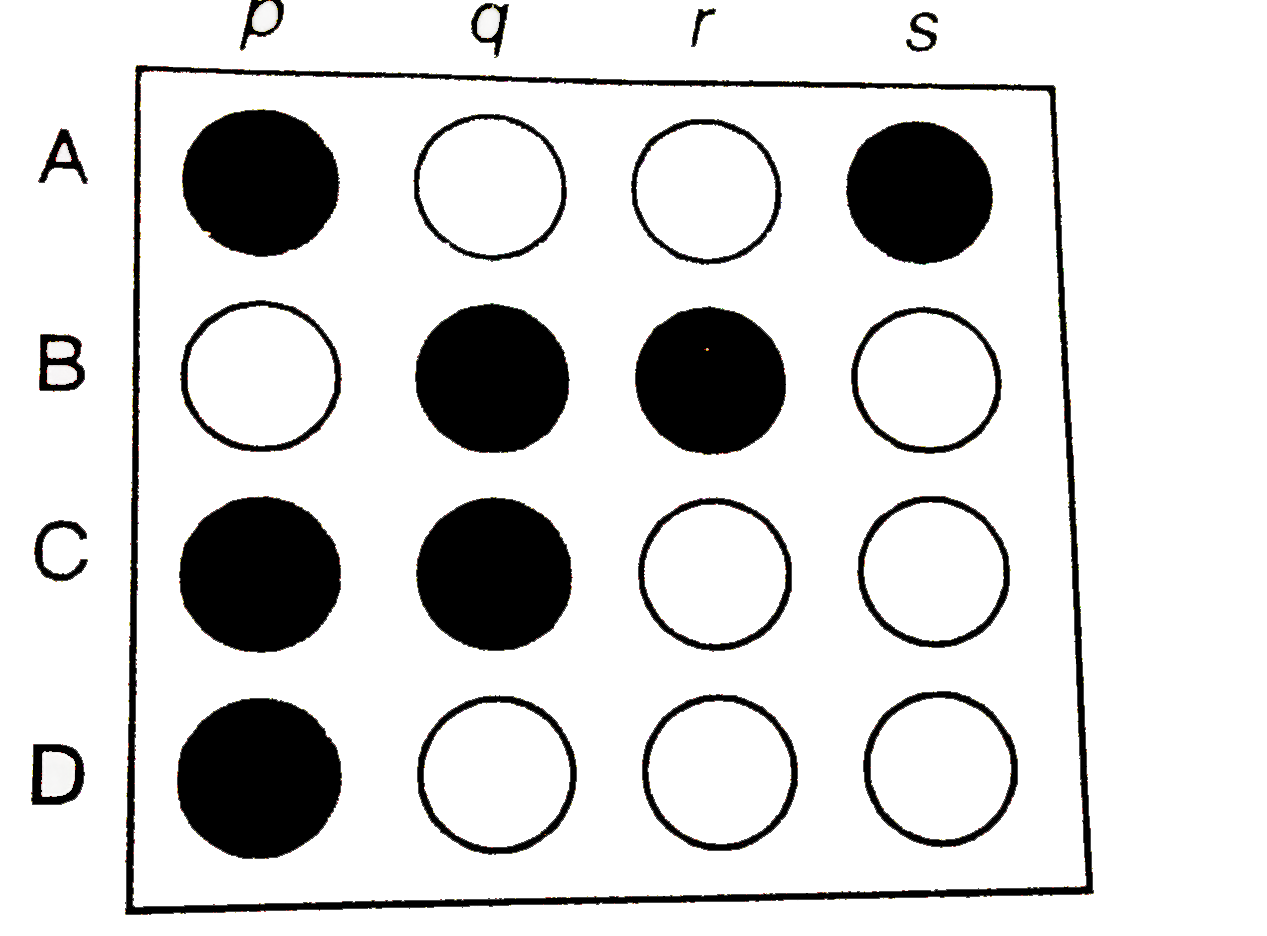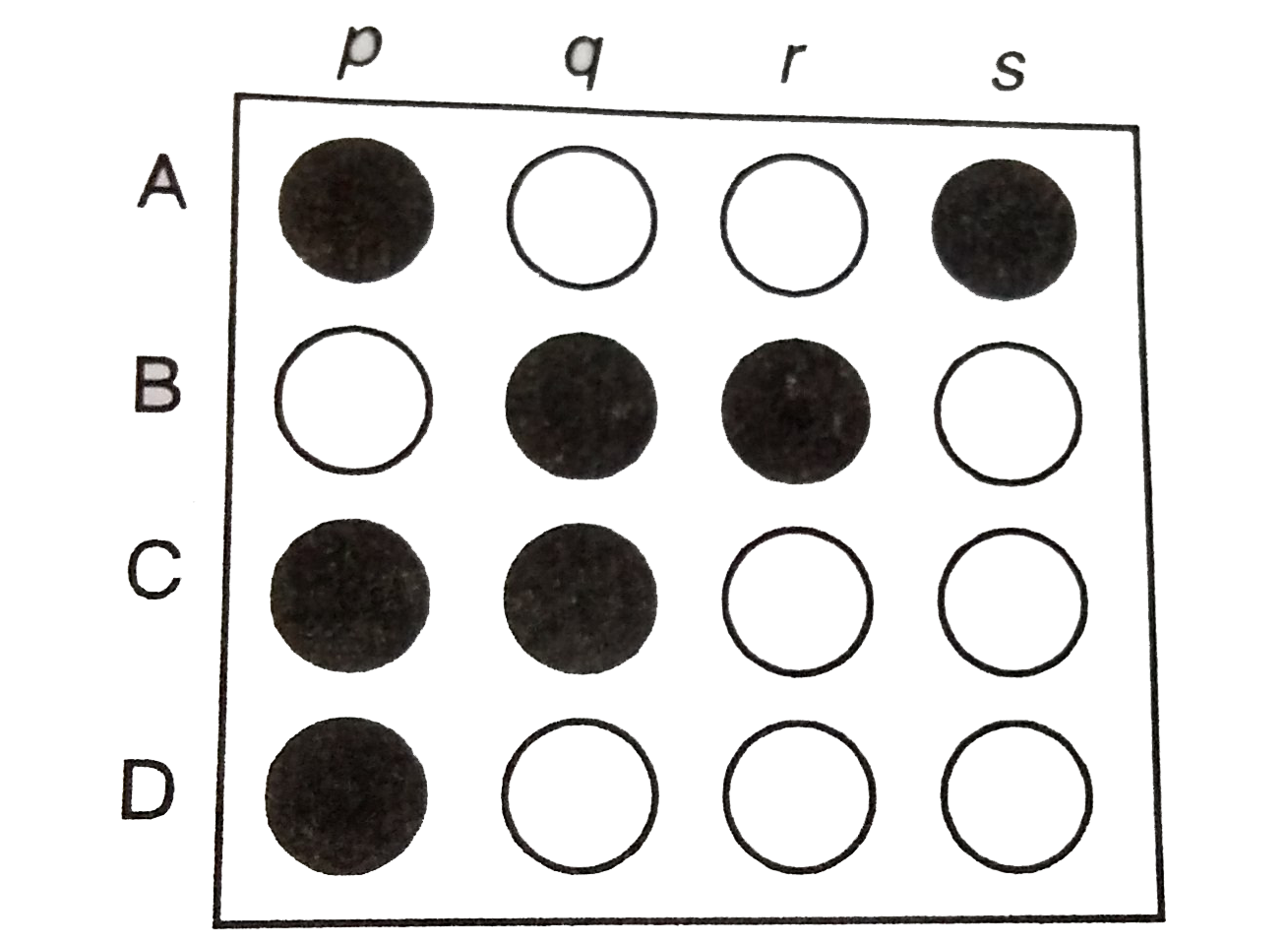column−Icolumn-II(a)the peoperty of metal that allows it tio be drawn into wire(p)Element(b)A single particle composed of two or more identical atoms (q)Physical property (c)A Property that can be observed without changing the chemical formula of substance(r)Molecule(d)A subshell that cannot be broken down into simple substances(s)Ductility(t)Malleability
The correct Answer is:(a-q,s);(b-p,r)(c-q);(d-p)
Fe2+→1s22s22p63s23p63d6
⇒ 
No. of exchanges =5!3!2!=10
Mn4+→1s22s22p63s23p63d3
⇒S.M.=2∣∣∣32∣∣∣+1=4
Zn2+→1s22s22p63s23p63d10
⇒μ=0
Na+→1s22s22p6
⇒μ=0
last e−⇒n=2,l=1,m=+1,−1,0,s=±12
Topper's Solved these Questions
- BOOK - GRB PUBLICATIONCHAPTER - QUANTUM NUMBERS AND GENERAL CHEMISTRYEXERCISE - subjective type34videos
QUANTUM NUMBERS AND GENERAL CHEMISTRY
- BOOK - GRB PUBLICATIONCHAPTER - QUANTUM NUMBERS AND GENERAL CHEMISTRYEXERCISE - 111videos
QUANTUM NUMBERS AND GENERAL CHEMISTRY
- BOOK - GRB PUBLICATIONCHAPTER - PRACTICAL ORGANIC CHEMISTRYEXERCISE - Exercise 4 (Matrix match type )1videos
PRACTICAL ORGANIC CHEMISTRY
- BOOK - GRB PUBLICATIONCHAPTER - REDOX REACTIONSEXERCISE - All Questions332videos
REDOX REACTIONS
Similar Questions
Match the column
Column I Column II(A)Electrostatic attraction can be possible(p)Between like charged particles(B)Electrostatic repulsion can be possible(q)Between unlike charged particle(C)Introduction of dielectric will not change the interaction(r)Between like charged bodies(D)No electrostatic force can be possible(s)Between unlike charged bodies(t)Between uncharged and charged bodiesView SolutionMatch the entries of column I with appropriate entires of column II Each entry in column I may have one or more than one corret option from column II if the correct matches are A-p,s, B-r,C-p,q,D-s then the correctly bubbled 4×4 matrix should be as follows:
column Icolumn II (A)Metal which reacts with dilute acids to give H_(2) gas(p)zinc(B)Metal whose container can be used to store conc HNO_(3)(q)silver(C)Metal which is used as an electrode in daniell cell(r)Aluminium(D)Metal which does not react with dilute acids to give H_(2) gas(s)copperView SolutionMatch the entries of column I with appropriate entires of column II Each entry in column I may have one or more than one corret option from column II if the correct matches are A-p,s, B-r,C-p,q,D-s then the correctly bubbled 4×4 matrix should be as follows:
column Icolumn II (A)Metal which reacts with dilute acids to give H_(2) gas(p)zinc(B)Metal whose container can be used to store conc HNO_(3)(q)silver(C)Metal which is used as an electrode in daniell cell(r)Aluminium(D)Metal which does not react with dilute acids to give H_(2) gas(s)copperView SolutionColumn IColumn II(A) Emulsionp Colloidal solution(B) solq Dye test(C) Tyndall effect r Milk(D) Colligative properties s Haemoglobin
 View Solution
View SolutionMatch the entries of column I with appropriate entries of column II. Each entry in column I may have one or more than one correct option from column II. If the correct matches are A-p, s , B-r , C-p, q , D-s, then the correctly bubbled 4×4 matrix should be as follows :
Column IColumn II(A)Rate constant of an exothermic reaction(p)increases with increase of themperature.(B)Rate constant of an endothermic reaction(q)decreases with increase of temperature.(C)Equilibrium constant of an exothermic reaction(r)not affected by adding catalyst.(D)Equilibrium constant of an endothermic reaction(s)not affected by change of initial concentration.View SolutionColumn IColumn II(A) Electrophoresp Movement of molecules of dispersion medium(B) Electro-osmosisq Determination at Avogador's number(C) Tyndall effectr Ultra-microscope(D) Brownian motions Determination of charge on colloidal particle.
 View Solution
View SolutionMatch the Column
Column IColumn IIA. ElectrophoresisP. Movement ofmolecules of D MB. Electro-OsmosisQ.Mechanical propertyC. Tyndall effectR. Optical propertyD. BrownianS. Determination ofmovementcharge oncolloidal particleView SolutionMatch the following Column -I Column -II (A) Aerosol (p) Optical property(B) Emulsion (q) Electrical property(C) Tyndall effect (r) Smoke(D) Dialysis (s) Medicines
View SolutionColumn-IColumn-IIQuantitiesFactors on which dependency exist(A)Molar conductance(p)Temperature(B)emf of a cell in operation(q)Concentration of species involved(C)Electrode potential (r)Nature of substance involved (D)Standard reduction potential (s)No . of electrons lost or gained in the reaction (t)is on additive property
View SolutionColumn-IColumn-II(A)Cathode rays(p)Helium nuclei(B)dumb-bell(q)Uncertainty principle(C)Alpha particles(r)Electromagnetic radiation(D)Moseley(s)p-orbital(E)Heisenberg(t)Atomic number(F)X-ray(u)electrons
View Solution

